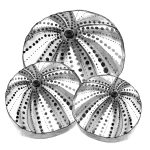Critical references
Introduction The 5Rs Model Themes & Examples Critical References Why a Sea Urchin? Acknowledgements Contact
Absolon, K. (2019). Indigenous wholistic Theory: A knowledge set for practice . First Peoples Child & Family Review , 14(1), 22-42.
Archibald, J. (2008). Indigenous storywork . Educating the heart, mind, body, and spirit. UBC Press.
Atkins, H., & Lake, J. (2021). Facilitating online learning with the 5R’s: Embedding Indigenous pedagogy into the online space.
Augustine, S. J. (2008). Oral histories and oral traditions. In R. Hulan & R. Eigenbrod (Eds.), Aboriginal oral traditions: Theory, practice, ethics (pp. 2–3). Halifax: Fernwood Publishing.
Battiste, M. (2002). Indigenous knowledge and pedagogy in First Nations education: A literature review with recommendations .
Bell, N. (2014, June 9). Teaching by the medicine wheel: An Anishinaabe framework for Indigenous education . EdCan Network .
Brown, A. & Begorary, D. (2017). Using a graphic novel to engage Indigenous youth in critical literacies. Language & Literacy. 19( 3), pp 35-55.
Corson, D. (1998). Community-based education for Indigenous cultures. Language Culture and Curriculum, 11( 3), 238-249.
Danyluk, P., & Hanson, A. (2021). Using Indigenous talking circles in online environments . University of Calgary, Calgary, AB.
Dion, S. D. (2007). Disrupting molded images: Identities, responsibilities and relationships—teachers and Indigenous subject material . Teaching Education, 18( 4), 329-342
Kirkness, V. J., & Barnhardt , R. (1991). First Nations and higher education: The four R’s — respect, relevance, reciprocity, responsibility . Journal of American Indian Education, 30 (3), 1-15.
Kirkness, V. J., & Barnhardt, R. (2001). First Nations and higher education: The four R’s: Respect, relevance, reciprocity, responsibility . In R. Hayhoe & J. Pan (Eds.), Knowledge across cultures: A contribution to dialogue among civilizations (pp. 75-90). Comparative Education Research Centre, University of Hong Kong.
Mills, K. & Doyle, K. (2019). Visual arts: A multimodal language for Indigenous education, Language and Education, 33 :6, 521-543,
Restoule, J.-P. (2017). Where Indigenous knowledge lives: Bringing Indigenous perspectives to online learning environments . In E. A. McKinley & L. T. Smith (Eds.), Handbook of Indigenous education (pp. 1-23). Springer.
Restoule, J.-P., & Chaw-win-is. (2017). Old ways are the new way forward: How Indigenous pedagogy can benefit everyone . Canadian Commission for UNESCO’s IdeaLab; UNESCO.
Sam, J., Schmeisser, C., & Hare, J. (2021). Grease Trail storytelling project: Creating Indigenous digital pathways . KULA: Knowledge Creation, Dissemination, and Preservation Studies, 5( 1).
Tessaro, D., Restoule, J.-P., Gaviria, P., Flessa, J.,Lindeman, C., & Scully-Stewart, C. (2018). The five R’s for indigenizing online learning: A case study of the First Nations schools’ principals course . Canadian Journal of Native Education, 40( 1).
Tessaro, D., & Restoule, J.-P. (2022). Indigenous pedagogies and online learning environments: A massive open online course case study . AlterNative: An International Journal of Indigenous Peoples , 18(1), 182-191.
Tuck, E., & Yang, K. W. (2012). Decolonization is not a metaphor . Decolonization: Indigeneity, Education. Society 1( 1), 1–40.
Wilson, A. (2021). Queering land-based education during Covid19. Journal of Global Indigeneity 5 ( 1), 1–10.
